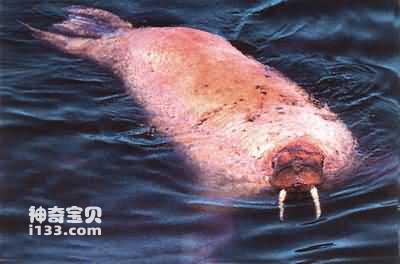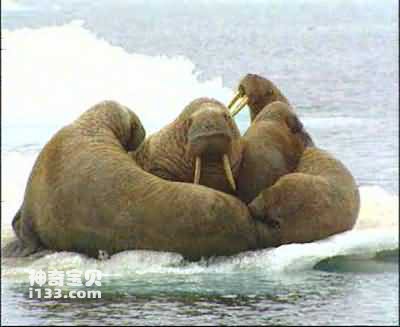Walruses are marine mammals endemic to the cold Arctic waters, just like leopard seals and crab-eating seals are endemic to Antarctic waters.
Walruses, like whales, have huge bodies and can provide humans with a large amount of organic raw materials. Therefore, as early as the 9th century AD, Nordic people began to hunt walruses near the North Sea. People have brutally slaughtered walruses for more than 1,000 years. Some tribes of Inuit and Chukchi people living in the Arctic today still hunt walruses and seals as their source of livelihood.

The main feature of the walrus' appearance is its long splay, which is 30-90 cm in length and weighs about 2 kg. Because they are large mammals with long tusks that live in the ocean, they are named walruses.
Walruses can use their long and large teeth to climb onto hard ice. This process works like this. The walrus first moves 1/3 of their body onto the ice, then it inserts its teeth into the ice with force, and then Like a leech, tighten your neck muscles to drag your body forward. Repeat this movement several times until you finally stand on the ice. As early as the 16th century, Swedish geographer and writer Magnus described this situation. He wrote: "The walrus uses its teeth to climb to the top of the rock and then returns to the sea." "The walrus relies on its tusks and flippers to reach the edge of the ice floe that is submerged in the water. Then it hooks the ice edge with its tusks and tightens its neck muscles so that one flipper can climb onto the ice. After the walrus concentrated all its weight on its tusks, it thrust forward with its whole body, and finally crawled on the ice with its flippers. Walruses have a half-centimetre thick layer of rough crust underneath their feet, so they won't slip on the slipperiest ice. The tusks of the walrus not only help the walrus walk on the ice, but are also used as weapons in fighting white bears and seals, as well as tools for digging holes in the ice and plowing the seabed to feed on shellfish. In other words, walruses cannot live in the Arctic without tusks.

animal tags:
We created this article in conjunction with AI technology, then made sure it was fact-checked and edited by a Animals Top editor.